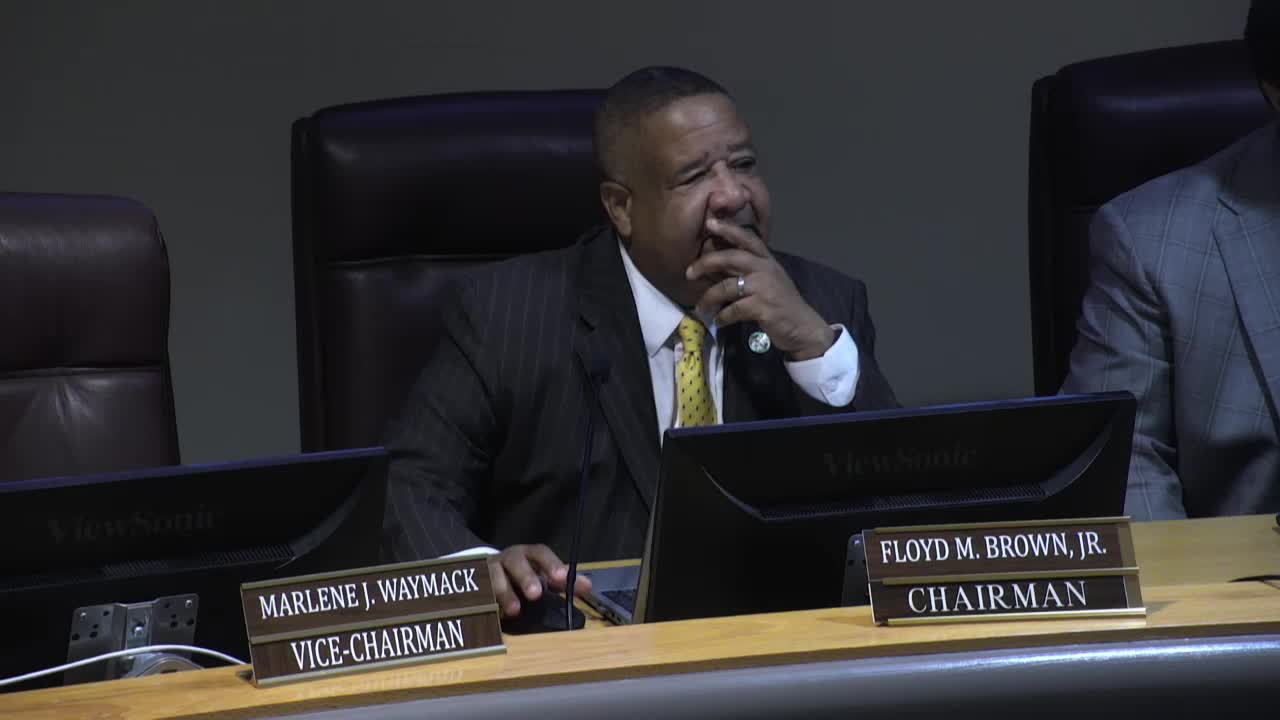County staff lays out phased project plan to update zoning and subdivision ordinances
October 14, 2025 | Prince George County, Virginia
This article was created by AI summarizing key points discussed. AI makes mistakes, so for full details and context, please refer to the video of the full meeting. Please report any errors so we can fix them. Report an error »

Prince George County planning staff presented a phased project plan Oct. 14 to overhaul the county�zoning (chapter 90) and subdivision (chapter 70) ordinances, focusing first on reorganizing and clarifying the code and meeting state statutory and court-law requirements, then on a later phase for potential rule changes following public engagement.
Planner Caleb Graves told the Board the update follows the county's incoming comprehensive plan and would proceed in multiple phases. Phase 0 (already begun) includes a proposed new table of contents and structure. Phase 1 would address environmental protections (floodplain, Chesapeake Bay provisions) and the subdivision ordinance to ensure state-code and court-law compliance; it emphasizes readability without changing substantive rules. Phase 2 would reorganize the zoning ordinance into user-friendly tables and definitions and include public input on topics such as signs; more substantive rule changes would be addressed in a later consultant-led phase with broad public outreach.
Why it matters: The ordinances date back in parts to the 1960s and contain legacy language that can confuse users. Staff said clearer structure will reduce staff-developer back-and-forth, speed reviews and reduce misinterpretation of rules that the county already enforces consistent with state law.
Process and scheduling: Staff will present draft resolutions to initiate ordinance amendment processes at the Oct. 28 meeting and expects to return a consultant contract for Board consideration in November or December. The approach staggers work so parts can be updated and used while later topics undergo public review.
Board questions focused on public input formats and examples of noncompliance; Graves said many issues are terminology and the ordinance's wording rather than department practice (example: manufactured-home width language not aligned with state law). Graves recommended a consultant-led public-engagement process along with staff and an advisory committee of stakeholders (builders, realtors).
Ending: The Board did not take final action but directed staff to return with resolutions and contract language to start the process; supervisors indicated support for phased, transparent engagement.
Planner Caleb Graves told the Board the update follows the county's incoming comprehensive plan and would proceed in multiple phases. Phase 0 (already begun) includes a proposed new table of contents and structure. Phase 1 would address environmental protections (floodplain, Chesapeake Bay provisions) and the subdivision ordinance to ensure state-code and court-law compliance; it emphasizes readability without changing substantive rules. Phase 2 would reorganize the zoning ordinance into user-friendly tables and definitions and include public input on topics such as signs; more substantive rule changes would be addressed in a later consultant-led phase with broad public outreach.
Why it matters: The ordinances date back in parts to the 1960s and contain legacy language that can confuse users. Staff said clearer structure will reduce staff-developer back-and-forth, speed reviews and reduce misinterpretation of rules that the county already enforces consistent with state law.
Process and scheduling: Staff will present draft resolutions to initiate ordinance amendment processes at the Oct. 28 meeting and expects to return a consultant contract for Board consideration in November or December. The approach staggers work so parts can be updated and used while later topics undergo public review.
Board questions focused on public input formats and examples of noncompliance; Graves said many issues are terminology and the ordinance's wording rather than department practice (example: manufactured-home width language not aligned with state law). Graves recommended a consultant-led public-engagement process along with staff and an advisory committee of stakeholders (builders, realtors).
Ending: The Board did not take final action but directed staff to return with resolutions and contract language to start the process; supervisors indicated support for phased, transparent engagement.
Don't Miss a Word: See the Full Meeting!
Go beyond summaries. Unlock every video, transcript, and key insight with a Founder Membership.
✓
Get instant access to full meeting videos
✓
Search and clip any phrase from complete transcripts
✓
Receive AI-powered summaries & custom alerts
✓
Enjoy lifetime, unrestricted access to government data
30-day money-back guarantee

